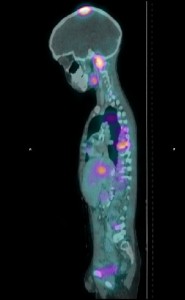
Jason Fleeger, technical operations manager for radiology, said five new pieces of equipment have been acquired to help deliver a better patient experience. They are shortening patient wait times and offering more thorough and high-tech scans.
Two of those pieces of equipment—the interventional radiology bi-plane and the Spect/CT—are brand new to Butterworth and the Helen DeVos Children’s hospital.
Spectrum purchased the bi-plane to support a growing neurosciences program at Butterworth Hospital.
Pretty brainy, right? The bi-plane is able to take images of the brain while catheters and other equipment are in place. This can be critical for patients who are suffering a stroke when every second counts.
Mark DeLano, MD, medical director of adult radiology at Spectrum Health, said the new equipment helps remove uncertainty.
“Imaging can help sort out exactly what’s going on inside,” Dr. DeLano said. “We can get definitive answers quickly in a more open environment that’s more comfortable for the patient. We are able to make higher quality diagnoses faster.”
The imaging devices can help treat brain diseases, cancer, strokes and more.
“Everything we get is higher resolution, more digital, easier to use than in the past,” he said.
The equipment becomes like a third eye for doctors, allowing them to see what would not have been possible even a few years ago. Instead of a scalpel, they can sometimes use small needles and catheters to resolve issues.
Dr. DeLano used appendicitis diagnosis as an example. Before CT, patients would have exploratory surgery that often would find a normal appendix. CT scans have eliminated the cost and complications of unnecessary surgery. Advances in radiology can facilitate appropriate surgery and avoid unnecessary procedures.
“If the surgery costs $20,000, avoiding 1,000 negative surgeries saves $20 million,” Dr. DeLano said.
One of Dr. DeLano’s favorite imaging capabilities is being able to observe brain functions. This can help doctors pinpoint what area of the brain is causing a seizure and remove or fix the problem, often negating the need for medication.
“We’re really opening new doors,” he said. “There are 100 billion neurons in the brain and each can talk to 10,000 other cells. This complex organization can be better understood by the connection networks that have developed forming circuits that allow us to move, think, and feel. We can now see the brain regions work together as functional units. Spectrum Health has entered the new era of ‘human connectome’, engaging in the study of how the brain networks are organized in health and disease.”
The details are amazing, according to Fleeger.
“The image quality is unparalleled in this new lab as it provides very crisp and detailed images of the brain,” Fleeger said. “The equipment significantly advances our commitment to provide the best possible care to our patients.”
That quality does not result just by having advanced equipment alone. It requires a well-trained staff committed to delivering high-quality care in a manner that patients are left with a positive impression of their imaging experience.
That commitment to quality has been recognized by the American College of Radiology, which awarded Spectrum Health and Helen DeVos Children’s Hospital the coveted Diagnostic Imaging Center of Excellence designation.
Spectrum Health is only the 29th entity in the nation, the second system in Michigan and the first hospital in West Michigan to earn the designation. Helen DeVos Children’s Hospital is the only children’s hospital in Michigan and third in the nation to receive the honor.
“In the imaging world, this designation is a significant accomplishment,” said Larry Genzink, Spectrum Health’s administrative director of radiology, who oversees more than 30 radiology locations. “It validates the high quality care we provide every day. Kudos to our physicians and staff for this outstanding achievement.”
What does this mean for you, the patient?
The designation is only bestowed upon programs that maintain a level of quality above and beyond standard practice.
This isn’t your grandparents’ diagnostic imaging world.
Here’s the equipment roundup:
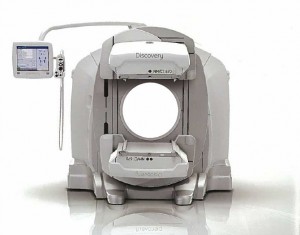 |
1. Nuclear Medicine Spect CT
|
 |
2. Siemens Bi-Plane Neuro System
|
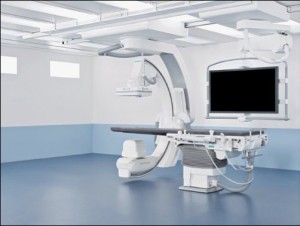 |
3. Siemens Single Plane System
|
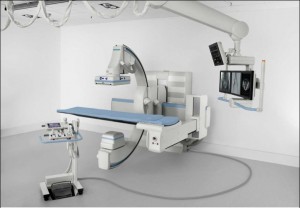 |
4. Siemens Multi-Purpose System
|
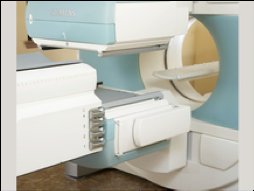 |
5. Nuclear Medicine Dual Head Spect
|
 /a>
/a>
 /a>
/a>
 /a>
/a>